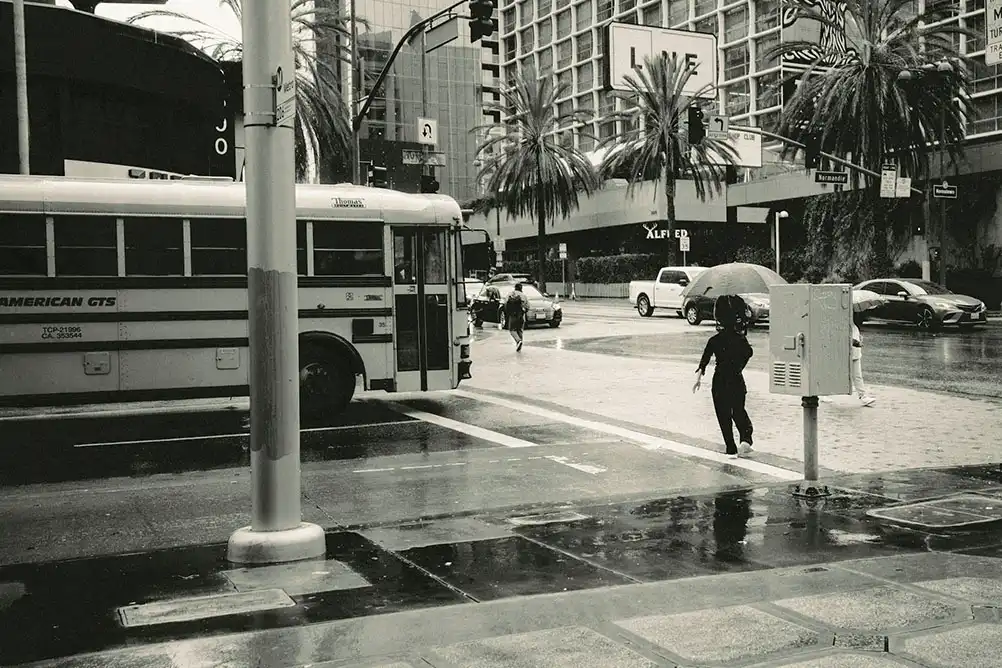Neglecting roof leaks during rainy weather can lead to severe financial losses, property damage, and legal risks that compound over time.
By Dan Cahill and Gary Stewart
When the first storms of the season roll through Southern California, roof leaks have a way of revealing themselves at the worst possible time. For property owners and managers, ignoring those leaks can quickly turn a manageable issue into a financial and structural crisis. The cost of inaction far outweighs the investment in timely inspection, roof leak repair, and maintenance.
The Financial Impact of Delayed Repairs
A small leak may appear minor at first, but the cost of delay escalates rapidly. Water intrusion can damage insulation, ceiling tiles, drywall, electrical systems, and HVAC components. Each day of inaction compounds the expense, often leading to emergency repairs that cost several times more than planned maintenance. In commercial properties, secondary costs such as business interruption, equipment damage, and lost tenant confidence add up quickly.
How Water Intrusion Damages Roofing Systems
When water finds its way beneath a roofing membrane, it begins to degrade adhesives, insulation, and substrate decking. Over time, trapped moisture compromises the roof’s ability to perform, reducing its lifespan and increasing the likelihood of additional problems including system failure. Once deterioration sets in, even professional restoration efforts become more costly and complex, requiring extensive roof leak restoration and structural repairs / reinforcement.
Mold, Mildew, and Indoor Air Quality Risks
Unaddressed leaks create the perfect conditions for mold and mildew growth. These microorganisms thrive in damp environments and can spread rapidly through HVAC systems. Beyond the musty odor, the presence of mold can pose serious health risks to occupants, potentially violating indoor air quality standards. For property managers, this can result in tenant complaints, remediation costs, and potential liability claims.
Structural Deterioration from Moisture Exposure
Prolonged moisture exposure weakens structural materials such as wood, plywood, metal decking, and fasteners. Corrosion, rot, and warping can compromise the building’s integrity and require extensive reconstruction. What begins as a small leak can, over time, evolve into a major structural issue that threatens both safety and asset value.
Legal and Liability Risks
For landlords and property managers, neglecting leaks carries profound legal implications. Water intrusion can lead to habitability disputes, code violations, or even personal injury claims if occupants are exposed to unsafe conditions. In California, where property laws place strong obligations on building owners, failing to address roof leaks promptly can expose stakeholders to costly litigation and insurance disputes.
Insurance Complications
Insurance providers often limit coverage for damage caused by deferred maintenance. When a claim is filed, inspectors can determine whether the problem developed over time or resulted from a sudden event. If they find that the issue stemmed from neglect, reimbursement may be denied. Maintaining proper records of inspections, maintenance, and roof leak repair services helps ensure compliance and preserves insurance eligibility.
Tenant Disruptions and Business Downtime
Leaks do not just damage buildings—they disrupt operations. Commercial tenants may have to halt production, relocate employees, or close temporarily for safety reasons. For landlords, this can mean rent abatements, damaged relationships, and potential turnover. Proactive maintenance not only protects the roof but also preserves business continuity and tenant satisfaction.
Preventive Maintenance Before the Rainy Season
In Southern California, the rainy season can bring unpredictable weather after long dry spells. Dust, UV exposure, and thermal cycling cause roofing materials to expand, contract, and crack. A structured maintenance program—complete with annual inspections, drainage checks, and early roof leak detection and repair—ensures that potential issues are resolved before storms arrive. This proactive approach extends the life of the roof and reduces overall ownership costs.
The Long-Term Cost Comparison: Repair vs. Replacement
Investing in repairs today can save significant money tomorrow. The cost of a single emergency commercial roof leak repair after heavy rainfall can rival the price of several years of preventive service. Regular maintenance keeps the system watertight, allowing for planned capital expenditures rather than sudden, unbudgeted replacements.
Conclusion
When the rain starts falling, a neglected roof can turn from an asset into a liability. The financial, structural, and legal consequences of ignoring leaks far outweigh the investment in proactive maintenance. At SBR Roofing, we help property owners and managers safeguard their buildings through expert roof leak repair services, ensuring long-term performance and protection—rain or shine.
About Author
As a proud fourth-generation commercial roofing contractor, Gary Stewart has dedicated his career to upholding the legacy of quality and craftsmanship established by his family. Today, as a managing partner, he works alongside his relatives, blending tradition with innovation to deliver exceptional roofing solutions. His commitment to excellence and teamwork not only strengthens SBR Roofing’s projects but also deepens those family bonds, ensuring that every roof we build is a testament to our shared values of integrity, durability, and service. Together, we are not just constructing roofs; we are building a future for our community and our family lineage.
Dan Cahill embarked on his journey in 2001, accumulating over 23 years of experience in the commercial roofing field. The original owner of SBR Roofing extended a trial opportunity in 2001, coinciding with the burst of the dot-com bubble. The proposition was simple: give it a year, see if it suits you, and if not, no hard feelings. Surprisingly, Dan found himself sticking around. Fast-forward over two decades, and he continues to thrive in the field.
With a background in sales, Dan discovered a passion for the dynamics of salesmanship, particularly in the freedom it offered from the confines of a desk. The opportunity to engage with people, navigate various situations, and even climb up on roofs appealed to him. This intriguing experience kept Dan hooked, prompting him to stay the course, eventually becoming a leader in the roofing industry.







